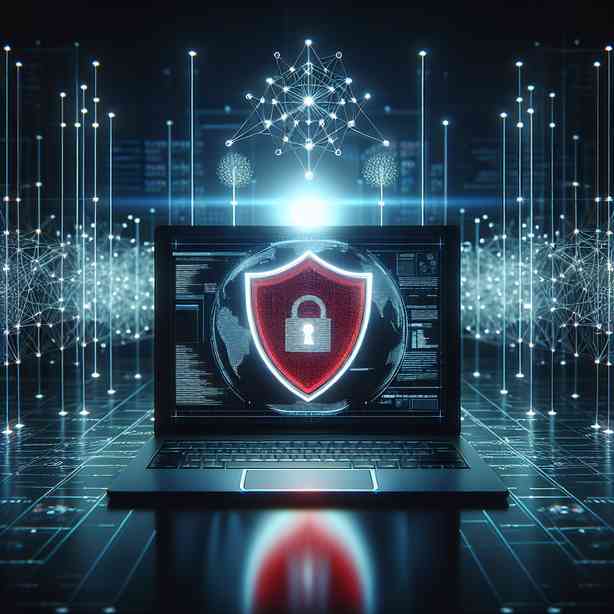
Zero-Trust Networks represent a paradigm shift in the approach to network security. Unlike traditional security models, which often operate on the assumption that threats primarily exist outside the network perimeter, the zero-trust model operates on the principle that no user or device, regardless of their location, should be automatically trusted. In this comprehensive exploration, we will delve into the nuances of zero-trust networks, examining how they work, the challenges they face, and the reasons organizations may need to re-evaluate the trust levels inherent within their systems.
At its core, the zero-trust model emphasizes the importance of continuous verification. Every access request is treated as if it originates from an untrusted network. This means that even if a device is within the corporate network, it still must prove its legitimacy. This dynamic approach alleviates many of the vulnerabilities associated with traditional security models, which often rely on a single point of defense—a perimeter firewall that may be easily bypassed by determined attackers.
Implementing a zero-trust architecture involves several key components. Firstly, organizations need to identify and classify their assets, including data, devices, and applications. Understanding what needs protection is essential in establishing security measures tailored to the unique threats these elements may face. Once assets are classified, implementing granular access controls becomes critical. These controls should enforce the principle of least privilege, ensuring that users have only the access necessary to perform their functions and nothing more.
Moreover, user identity verification plays a crucial role in a zero-trust network. Multifactor authentication (MFA) should be standard practice, requiring users to provide multiple forms of verification before gaining access. By doing this, organizations can significantly reduce the risk of unauthorized access and data breaches. Additionally, continuous monitoring of user activity helps detect anomalies that may indicate a breach or potential insider threat, allowing organizations to respond swiftly to mitigate damage.
However, even with the most meticulous planning and execution, zero-trust networks face unique challenges. One major concern lies in the user experience. As organizations tighten security measures, employees may feel inconvenienced by the rigorous authentication processes. Striking a balance between robust security and user convenience is essential; otherwise, productivity may suffer, leading to frustration among employees and potential resistance to necessary security measures.
Another challenge involves the complexity of implementation. Transitioning from a traditional security model to a zero-trust architecture demands time, resources, and a cultural shift within the organization. Organizations must invest in the right technologies, including identity and access management solutions, monitoring tools, and appropriate training for staff. This process can be daunting, particularly for organizations with existing legacy systems that may not easily integrate with modern security approaches.
Moreover, the concept of zero-trust can sometimes be misinterpreted. Some organizations may mistakenly believe that simply implementing certain technologies or processes automatically renders their network zero-trust compliant. In reality, it requires a comprehensive strategy that encompasses people, processes, and technology. Merely applying tools without fostering a zero-trust mindset among all stakeholders can undermine the model’s effectiveness.
While navigating these challenges can be complex, the benefits of a zero-trust network far outweigh the hurdles. One of the most significant advantages is enhanced security. By adopting a zero-trust approach, organizations can significantly lower the likelihood of data breaches and mitigate risks associated with insider threats. Furthermore, zero-trust networks are better equipped to adapt to the evolving threat landscape, thanks to their foundational focus on continuous verification and monitoring.
Moreover, zero-trust architecture aligns well with the increasing shift toward cloud services and remote work. As employees access corporate resources from various locations and devices, traditional perimeter-based security becomes less effective. A zero-trust model ensures that security controls are applied consistently, irrespective of where or how employees connect to the network.
Additionally, organizations that implement a zero-trust approach can benefit from greater regulatory compliance. Many industries, such as healthcare and finance, are subject to stringent data protection regulations. A zero-trust model enables organizations to maintain better control over access to sensitive information, thereby reducing the risk of non-compliance and the associated financial penalties.
As we further explore the concept of zero-trust networks, it’s essential to highlight the importance of continuous improvement. The security landscape is ever-evolving, with new threats emerging regularly. Consequently, organizations need to regularly assess their security posture, updating their zero-trust strategies to ensure they remain effective against new vulnerabilities. This proactive stance is critical in fostering a culture of security that permeates every level of the organization.
Collaboration is another cornerstone of a successful zero-trust implementation. Involve all departments, from IT to human resources, in discussions about security policies and practices. This alignment ensures that security protocols are not only well understood but also embraced by all employees. When every individual feels responsible for security, organizations can create a more resilient and secure environment.
Moreover, organizations should invest in education and training around zero-trust principles. Providing employees with the knowledge and understanding of zero-trust can help ease the transition and foster a culture of security awareness. This includes understanding the risks of social engineering, recognizing phishing attempts, and the importance of secure passwords. Employees who are well-informed are often the first line of defense in thwarting potential threats.
As we conclude this comprehensive examination of zero-trust networks, it’s clear that while the transition to a zero-trust model can be complex and challenging, the advantages it offers far surpass the hurdles organizations face. With the shift in the threat landscape, the evolution of work patterns, and the increase in regulatory scrutiny, adopting a zero-trust architecture is not merely an optional enhancement but an essential strategy for organizations striving to safeguard their assets, data, and network. By continuously verifying trust, effectively managing access controls, and actively fostering a culture of security, organizations can navigate the complexities of modern-day security challenges and position themselves at the forefront of resilience in an ever-changing digital world.


